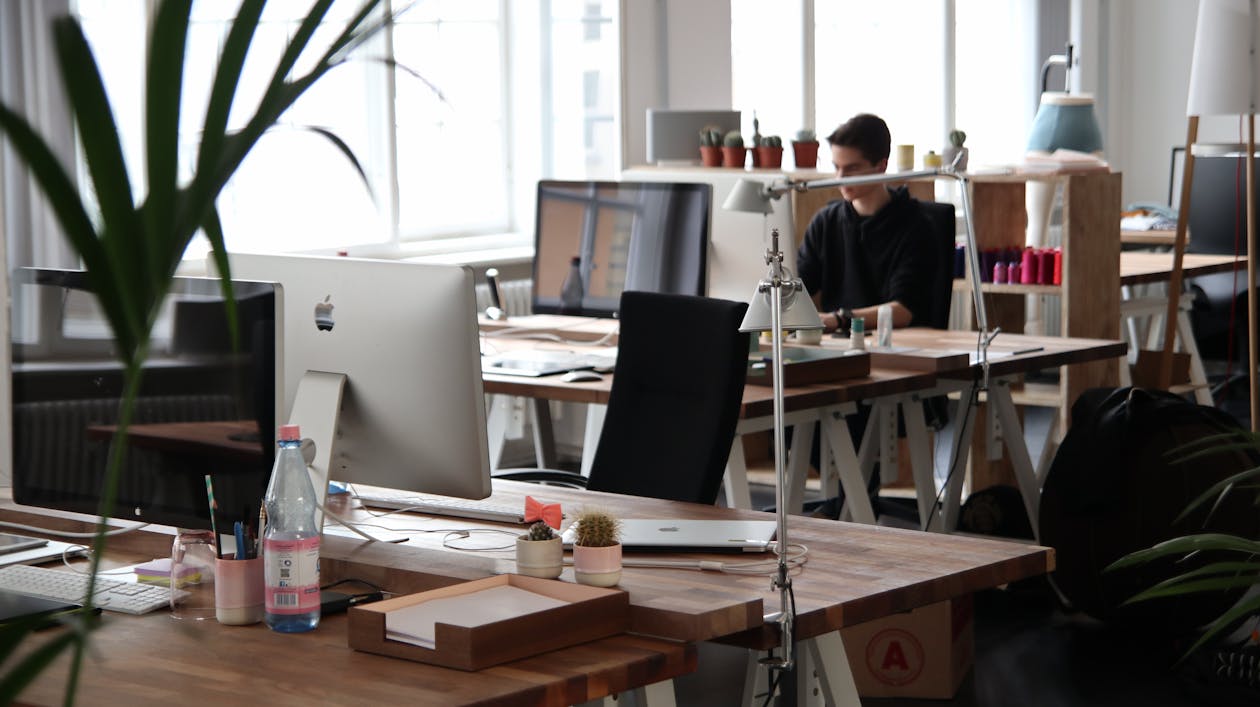
TV shows like Mad Men harken back to the days when executives spent much of their time behind the closed doors of their private offices, and junior colleagues often shared an office with one or two other colleagues.
Meetings took place behind closed doors. Workers had a higher expectation of privacy then they have today, but there was also a sense of distrust and separation. Employees wondered what was really going on at all those closed-door meetings. They also had a sense that top brass was inaccessible.
The cubicle age brought open-door policies that literally meant the few top-level managers with offices literally kept their doors open. Most employees sat in cubicles with a partition for a small amount of privacy. Noise was somewhat reduced by the barriers.
Now open plans rival cubicles for the new champions of office design. The open plan leaves no partitions. Things are literally transparent. Some offices provide conference rooms for private conversations, but overall, privacy is out and an open, inclusive workspace is in.
So what if you are a small business owner trying to decide: cubicles or open?
Benefits of the Cubicle
The cubicle has worked for decades. It’s the stalwart of modern office design. This structure is inexpensive and easy to organize. It is also easy to keep the office organized because it provides partitions that clearly establish each worker’s boundaries.
Though workers can still hear each other’s conversations, they often feel they have adequate privacy for tasks that are not for prying eyes. No one wants to feel a need to use tiny font on their screens while completing performance reviews or expense reports. They also feel free of visual distractions. It is easy to tune out conversations, but a group of people huddled across the room can be difficult to keep out of mind.
Benefits of the Open Plan
The open plan concept has been driven by a less hierarchical nature in the workplace, explains Michael Useem in a New York Times article. He reasons that the open plan literally reduces the barriers that prevent information from flowing up and directives from flowing down in an organization. The open plan fosters a team environment where open communication is encouraged.
Drawbacks of the Open Plan
Useem also notes that many workers complain about the open plan’s tendency to increase worker distractions. The open plan can also sometimes make conversations that should be private become public. However, he sees these problems as easily remedied. Companies can make pods for private meetings available, and they can create better insulation against noise within the open plan.
Choose the Right Desks
When developing your office plan, choosing the right desks is crucial. Offering workers the right amount of work and storage space, along with strong ergonomics and attractive aesthetics create a workplace that fosters productivity. Examples of the latest designs are available at D&R Office Works, Inc., and similar providers.
Whether choosing cubicles or an open plan, employing the right office and desk equipment makes your small business office a modern, appealing workplace.
Anica is a professional content and copywriter from San Francisco, California. She loves dogs, the ocean, and anything outdoor-related. She was raised in a big family, so she's used to putting things to a vote. Also, cartwheels are her specialty. You can connect with Anica here.
Post new comment
Please Register or Login to post new comment.